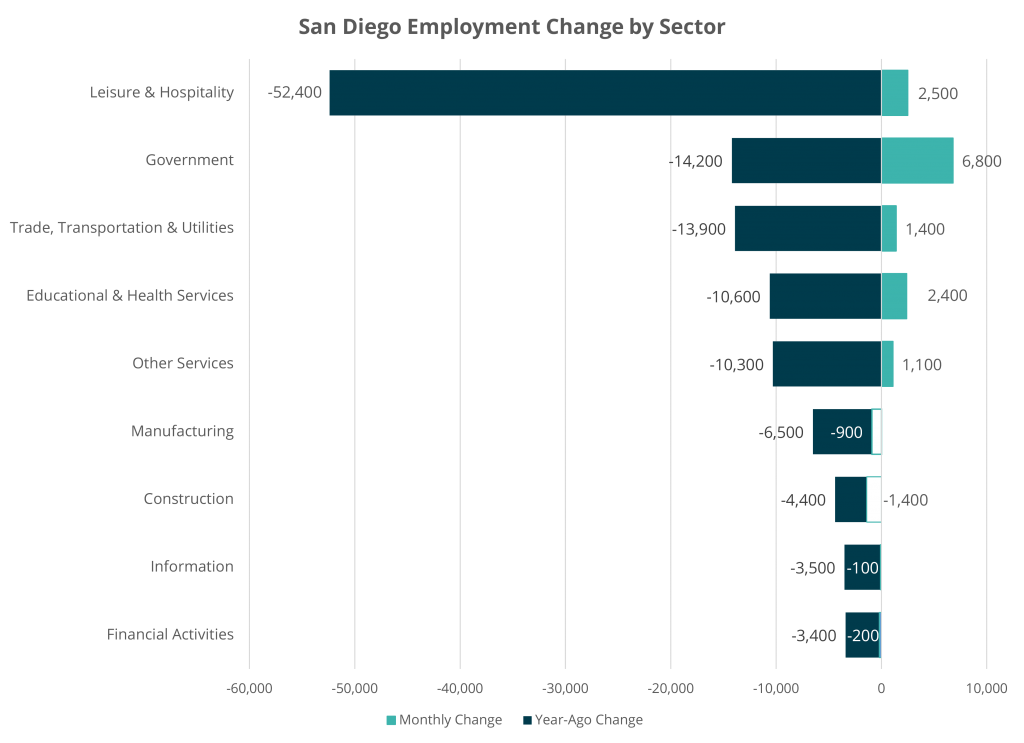Every week, ‘Good News of the Week’ features a curation of positive headlines from San Diego, delivered straight to your inbox. A blend of aggregated stories from San Diego’s most trusted news sources and original EDC-created content, GNOTW provides a comprehensive recap of the region’s best stories from the past week.
For the week of November 6, 2020, here’s what we’re reading:
- EDC’s commitment to values, not partisanship
- Kandji raises $21M for software that manages Apple devices in the workplace
- Lytx compliance services to support UniGroup’s entire fleet
- EDC Monthly Report: November 2020
- Advancing San Diego companies Family Proud and WithHealth selected for Qualcomm’s Small Business Accelerator Program
- Southwest Airlines marks inaugural flight to Honolulu from San Diego International Airport
- San Diego Workforce Partnership: Immigrants a driving factor to San Diego’s economy
…and here are the events we’re (virtually) attending:
- November 12 – UC San Diego
Innovation at the Edge: Artificial Intelligence & Ethics - November 16 – CONNECT ALL @ the Jacobs Center
Business Accelerator Program Applications - November 17 – EDC, San Diego Grantmakers
Build Better: A Bold Virtual Summit to Reimagine Our Region’s Future - December 3-4 – California Forward, California Stewardship Network
2020 California Economic Summit
A look back at Advancing San Diego’s Career Exploration Day and Virtual Career Fair
With the support of title sponsor Qualcomm, EDC hosted Advancing San Diego’s Career Exploration Day and Virtual Career Fair – a free event that brought together San Diego employers and students for a full day of career exploration, professional development, company information sessions, peer learning, and networking. Throughout the day, 150 students from universities, high schools, and training programs across the region logged on to chat with employers in the virtual career fair and listen in on a webinar series on job search strategies.
San Diego business resources:
Amidst everything happening in the world, we need a reminder that there’s plenty of ‘Good News’ to go around in San Diego. We have also compiled additional resources for businesses and individuals seeking additional guidance.
For businesses:
- Find information at EDC’s COVID-19 page
- Find North County information at Innovate78’s COVID-19 page
- Apply for disaster loan assistance
- Access San Diego Workforce Partnership’s updates for businesses
- Pivot operations to produce PPE, sanitizer, & more
- Find additional guidance from the CDC
- Apply for San Diego County’s Small Business Stimulus Program
- Employers with more than 100 employees: enroll in CalSavers by September 30, 2020.
For individuals:
- See which San Diego companies are still hiring
- Access San Diego Workforce Partnership’s updates for individuals
- Donate to the COVID-19 Community Response Fund
- Find additional guidance from the CDC
Be in the know – sign up below to receive future editions of GNOTW.
Want to submit your event or news update to our weekly newsletter? Contact us for more information.

Heather Dewis
Sr. Manager, Marketing Communications
